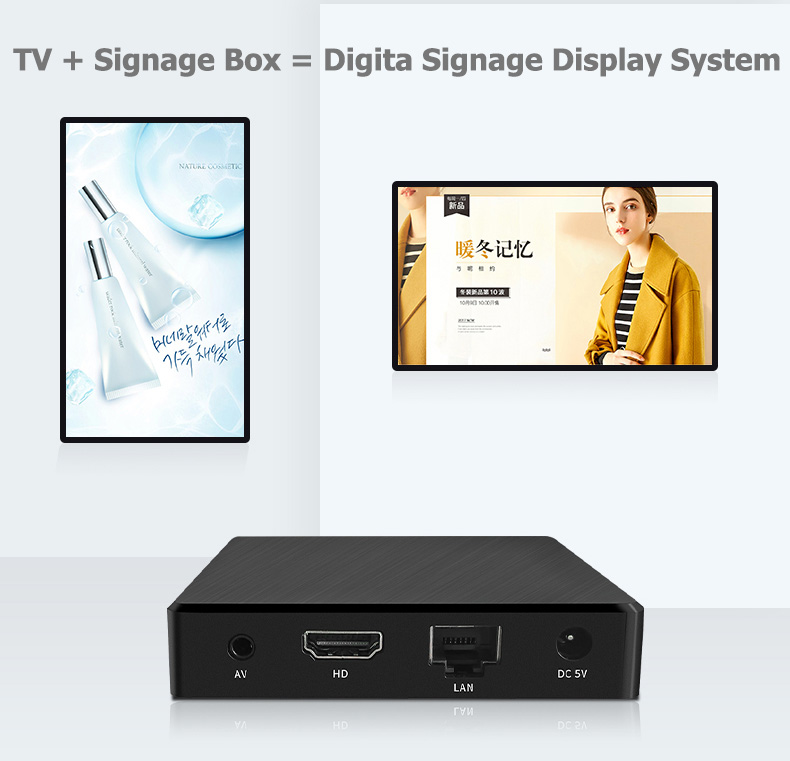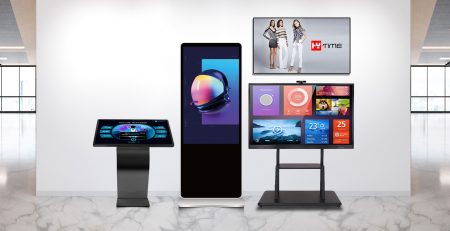Digital Signage Displays VS TV Screens
Ever wonder about those flashing, bright boards that occupy the street beside the mall you go to? It’s flickering pictures changing every second, displaying a vivid advertisement that grabs your attention every time. Even if you’ve seen the advertisement on TV screen, a thousand times! That, folks, is what we call a digital signage.
Digital signage (more simply known as digital advertising screens or digital menu boards) is a revolutionary piece of technology which utilizes a high-definition display on one or multiple screens. Huge digital images, fast pacing videos, flickering product descriptions, and flashing advertisements as well as other types of media content is displayed on the digital signage screens to grab the attention of passersby. Moving objects in ultra HD display allows the audience to immerse themselves in an engaging experience
Now you might think, you can consume media easily through your good old-fashioned Television. Turn it on and see vivid, bright motion pictures coupled with sound! Then, what actually is the difference between commercial digital signage and consumer TVs?

Built to differ
The televisions that you use at home, does not possess the ability to be used consistently for 24 hours. Would you want to risk a damaged tv screen with faded colors and distorted imageries? We’re guessing no.
In opposition to this, digital signage software is constructed with an commercial grade LCD, LED back-lighting, or a Projection display which allows pictures, videos, and other content to be used constantly and consistently.
There is no risk of over heating or image distortion as digital signage display is frequently built with sufficient ventilation or fans that maintain an optimal temperature during operation. Moreover, TV screens can also never change the orientation in which the media is displayed. Images and videos can only be viewed in one display, i.e. landscape (horizontal) mode. Portrait mode is not compatible with TV screens.
On the other hand, commercial digital signage displays can effectively change their orientation, switching between landscape and portrait mode. This elevates customer experience.
Screen Control
In the case of handling projections and commercial display on screens, all-in-one digital signage system allows for remote monitoring by multiple people. They are built in with connectors that can let technically advanced or specialized people access the content on any screen and fix any problems, making content management possible through remote monitoring.
TV screens are essentially for domestic purposes, that neither have a need or option for any sort of remote monitoring. The connectors found in TVs can be attached to other streaming services that allow steady media content to be displayed on a TV screen. Most TVs now have many annoying ads popping up on boot-up screen so you can’t just plug-and-play the media contents you like.
Brightness and Display
Bright, vivid, and color contrasting images are essential to make an impact in a commercial environment. The brightness levels are of critical importance when it comes to digital signage screens on streets and plazas. This is what attracts people, enriching their customer experience as they find themselves mesmerized by captivating images and video content.
A digital signage screen can adjust brightness levels to 8 times the normal, with a maximum of 350 cd/m2, customizing it according to the required outdoor preference. This helps gain the attention of consumers in busy locations.
A TV screen, in comparison, does not require such high levels of brightness or brilliance to engage consumers and create an affect.
Warranty and Repairs
Doesn’t it feel nice, knowing that you can return a product if it malfunctions? A warranty saves our money each time there is a technical problem, allowing us to be stress free for a long duration of time. This warranty is only for a one-year period when it comes to residential televisions.
Imagine a distorted image display, just a day after your warranty expires. Sounds like a headache, doesn’t it? Moreover, using TV screens for commercial purposes, often negates the one-year warranty, making the whole process highly risk oriented. In addition to that, warranties for residential TVs only make up for repairs that are walk-in, thereby supplementing the hassle of carrying the product to repair locations yourself.
Digital signage displays are much more hassle free in this case. They come with a three year warranty along with free maintenance support after sale. This means, your installation issues will automatically be taken care of. Comprehensive warranties for these digital signage screens also take care of any repairs needed on-site. Technical issues for digital signage display thus get fixed in the blink of an eye!
Accidental Operation
Visualize a faulty remote control shutting your TV off, three times in a row. Even the thought of a defective remote interrupting your visual experience can infuriate you. Instances like these are not rare.
A broken remote control can inadvertently shut your screen off, causing it to not turn on for a long time. This abruption is of great concern.
Such a matter of worry does not exist in digital signage. In fact, commercial digital signage displays possess the ability to prevent any remote signals that controls them. They also acquire a fixed schedule that can turn screens or forcefully shut them off.
Ambiguity and mismanagement of screen images in a digital signage display is, therefore, greatly reduced.
Now that you’re familiar with some key distinctions between TVs and digital signage displays, lets venture into a few pros and cons of digital signage.
Pros of Digital Signage System
Interactivity is the key
One of the best features of Digital Signage is its capacity to be interactive. Multitudes of options lie at your doorstep. No need to ask a waiter to come to your table and take your order. Or go up to the reception to tell them what you want.
A digital signage display with its interactive touch screens can allow you to choose your order from the vicinity of where you are sitting and create a pleasant experience.
In a world affected by the pandemic, digital signage displays also offer interaction free engagement with multiple features that immerse customers.
Storage for Days
The mass storage of a digital signage display is what makes it an ideal business investment. A huge range of content, from pictures to videos and flashy, retro advertisements can be stored and then be available for commercial display. This will make sure that views for the consumers keeps changing and don’t become monotonous or boring.
This also paves way for features of customizability. All kinds of media content can be tailored, cut, and sequenced to reflect creativity. Any kind of customization is possible whether it is a long sequence of animations or fancy transitions of company products. Screens can be changed in a split-second to create eye-catching results.
Eye-catching Views
As human beings, we interact with things better visually. Our eye catches things that fall out of the ordinary and are bright, vivid, and colorful. For this very reason, digital signage displays become the best source of marketing for businesses.
As a consumer, we are obliged to walk into streets with a commercial display of products that are powered by digital signage. Their vibrant, bold, and intense imageries captivate us into diverting our attention towards them. This ultimately influences our decisions as a consumer. A visually curated advertisement will drive us into buying a product.
The attention-grabbing commercial display of digital signage in outdoor environment can in turn boost businesses and increase sales. Their versatile nature can also aid all kinds of businesses, ranging from healthcare, finance, entertainment to electronic, and cuisine oriented. Increasing revenues and business promotions are the best benefits of digital signage.
Cons of Digital Signage
Higher Initial Cost
The initial cost of installing digital signage is relatively higher as compared to a residential TV. Even after installation, the claim of its flexibility can be falsifies when increased customizations are added to the total cost.
Although digital signage is an ever evolving piece of technology, its continuous modifications won’t require a large sum of money to be spent, once the system is deployed, all screen can be monitored and managed through the centralized unmanned system. And the overall return on investment is also extremely high, especially when there are no need of the supervision of working staff.
Can we use a TV commercially instead of Digital Signage?
As discussed above TVs can be used commercially in place of installing a commercial display utilizing digital signage. However, the durability of a TV will be significantly lesser than a digital signage display.
Moreover, using a TV instead of a commercial grade digital signage display will not be cost effective. Since TVs do not have the option of remote content management, repairing costs will double in the case of a screen turning off accidentally.
Lastly, the environment friendly factor is a huge consideration if you’re opting for TVs. TV requires a considerable amount of power drainage, leading to even greater electricity costs. This only adds to costs and lowers effectiveness.
There you have it. A small guide to help you compare Digital Signage and TVs. We hope you found this article helpful and gave you an insight into the world of digital signage.







Leave a Reply
You must be logged in to post a comment.